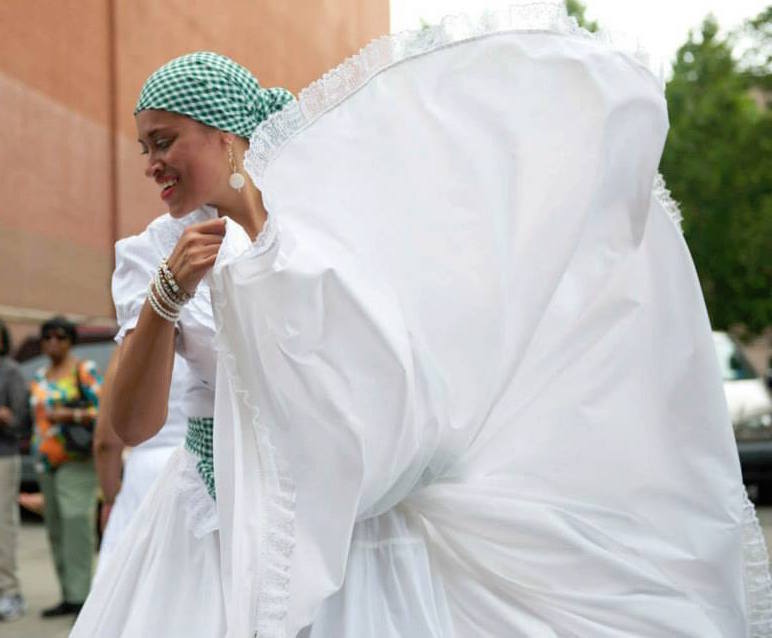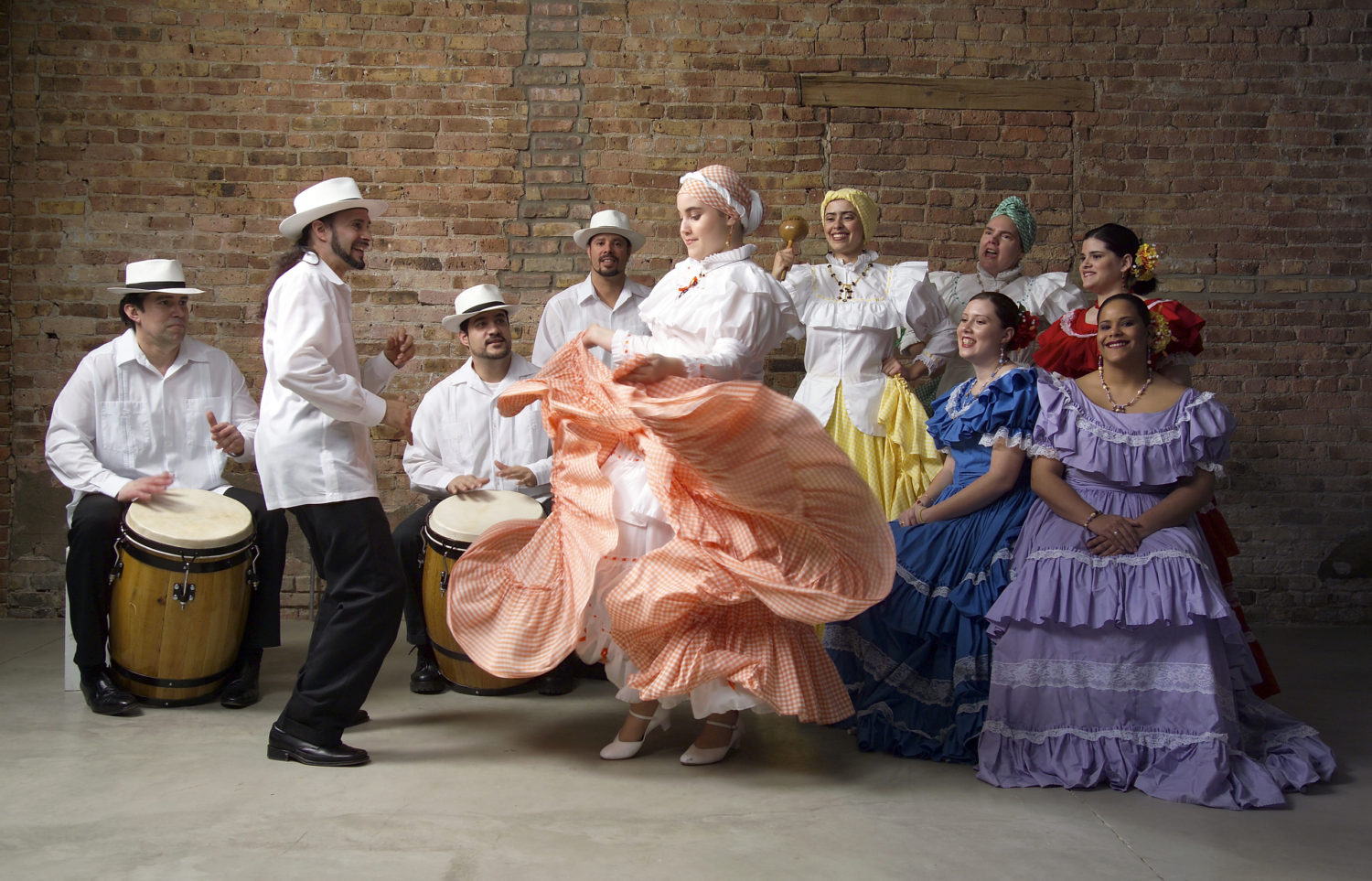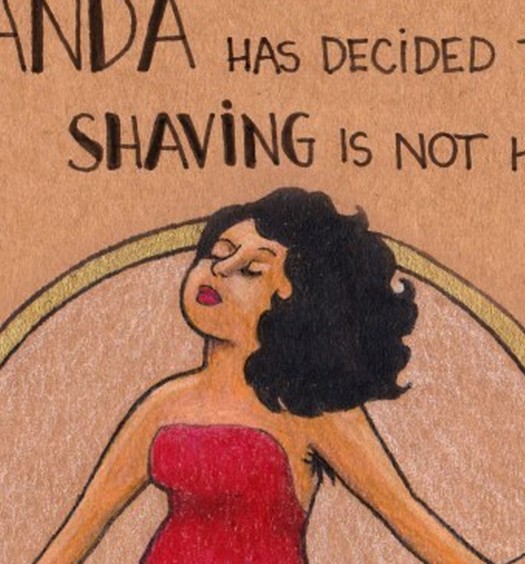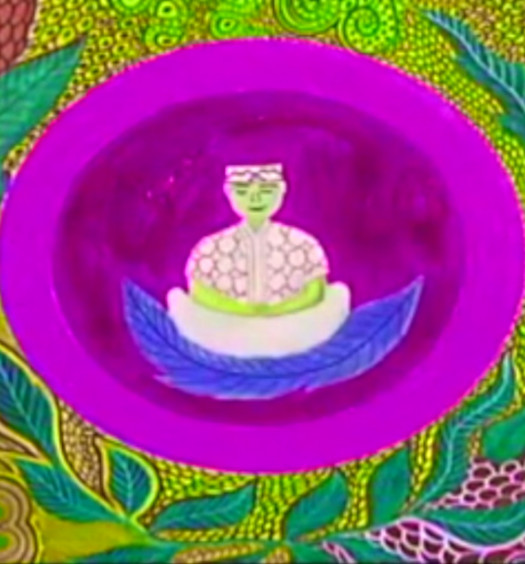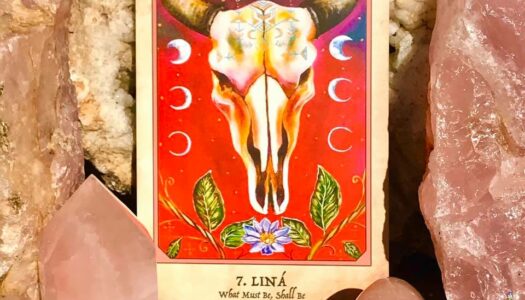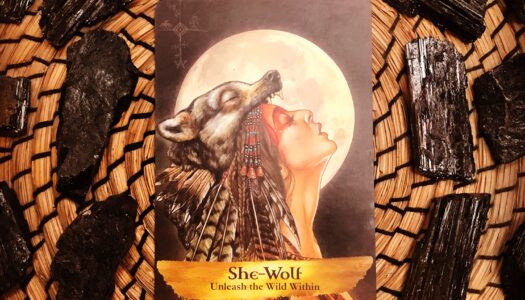From Africa to Puerto Rico: Bomba
Bomba music was a source of political and spiritual expression. The lyrics conveyed a sense of anger and sadness about their condition, and songs served as a catalyst for rebellions and uprisings. But bomba also moved them to dance and celebrate, helping them create community and identity.

Created on Puerto Rico’s colonial sugar plantations by African slaves and their descendants, bomba is the most purely African music genre of Puerto Rico and one of the oldest, dating back to the 1680s. Bomba’s roots may trace back to the Akan people of modern Ghana, the original ancestors of much of the black population of Puerto Rico. Performing and dancing the bomba provided a social and political outlet for a people burdened with the hardships of slavery; bomba was danced at the sugar plantations on Saturday nights and holidays, usually in open areas in the sugarcane fields or in the plazas of the town square. Although the bomba developed as a secular dance form, it provided an outlet for spiritual expression and release as well.
Bomba and plena are often mentioned together as though they were a single musical style, both reflect the African heritage of Puerto Rico, but there are basic distinctions between them in rhythm, instrumentation, and lyrics. Plena developed from bomba music around the beginning of the 20th century in southern Puerto Rico. Plena lyrics are narrative. They convey a story about events, address topical themes, often comment on political protest movements, and offer satirical commentaries. Tito Matos, leader of the Puerto Rican group Viento de Agua, describes plena as “the newspaper of the people.” Plena has only one basic rhythm, in contrast to bomba´s sixteen rhythms.
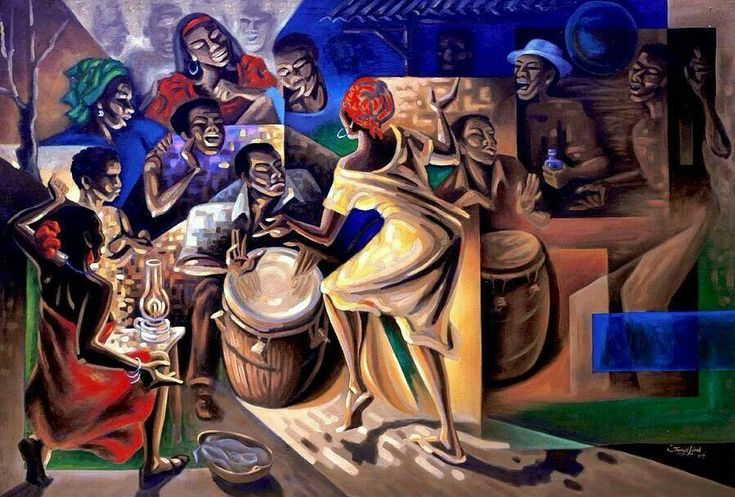
Forbidden from worshiping their ancient African gods, the African communities fused their customs onto the worship of St James. During festivals that honored the Christian saint, bomba music was played and a traditional mask, called “vejigante” in Spanish, was worn. The mask was supposed to scare away the evil spirits and pirates that populated the Caribbean. Bomba dances were performed during important social or community events. As with other music traditions that originate in West Africa, dance and music are inseparable counterparts in a bomba performance.
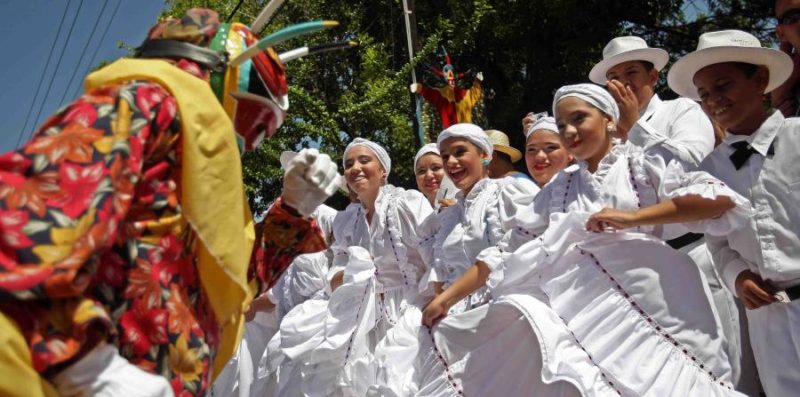
Some historians say that the bomba first developed Loíza, a town on the Northeast coast of Puerto Rico with a strong African presence. Regardless of its original birthplace, the genre continued to develop in coastal towns such as Ponce, Loíza Aldea and Mayaguez where in the 1800s large communities of black workers gathered around sugar cane mills. As the workers moved San Juan and other urban areas, bomba (as well as plena) became a part of urban cultural life. Traditional bomba ensembles featured two or three differently pitched drums, typically made from rum barrels and called barriles, a single maraca, a pair of sticks (“palitos”) called cuá or fuá that tap out a fixed organizing rhythmic timeline on the side of the drum or another resonant surface. A solo singer is answered by a chorus call-and-response style, singing over the great variety of rhythmic patterns that comprise the bomba.
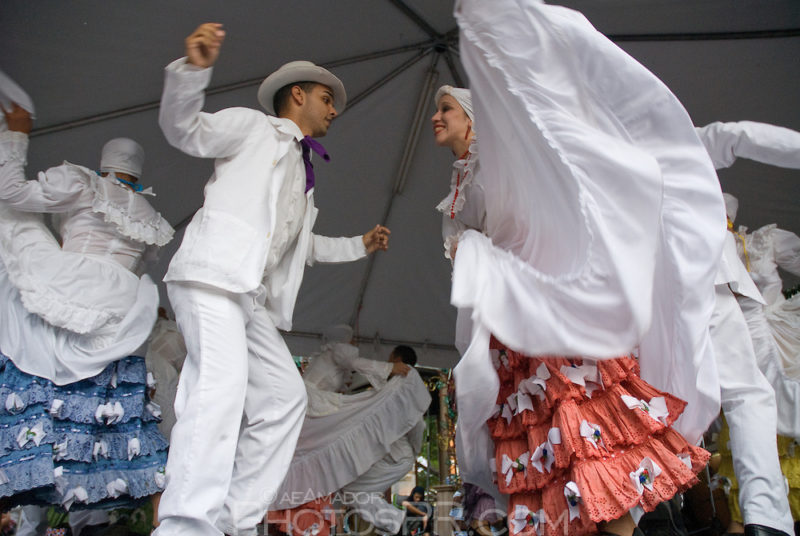
Traditionally bomba is danced by a mixed couple who take turns showing off their skills, competing with each other and with the drummer. The dancers proceed in pairs and without contact. The excitement and sensual tension in the music is generated by the often improvised interactions of the singer and chorus, the drummers’ rhythmic exchanges, and the suggestive “conversation” between the highest pitched drum and the dancer. The drummer follows the movement of the dancer; dancer and drummer cajole, tease and challenge each other to what appears to be a sensual dual, which lasts as long as the dancer’s stamina continues. The effect is that of an intimate visual and musical exchange between singer, drummer and dancer.
Bomba and Plena are often mentioned together as though they were a single musical style, both reflect the African heritage of Puerto Rico, but there are basic distinctions between them in rhythm, instrumentation, and lyrics.
Plena developed from bomba music around the beginning of the 20th century in southern Puerto Rico. Plena lyrics are narrative. They convey a story about events, address topical themes, often comment on political protest movements, and offer satirical commentaries. Tito Matos, leader of the Puerto Rican group Viento de Agua, describes plena as “the newspaper of the people.” Plena has only one basic rhythm, in contrast to Bomba´s sixteen rhythms.
Bomba and Plena continue to be present in the cultural life of Puerto Rico, and are symbolic to the Puerto Rican identity.
